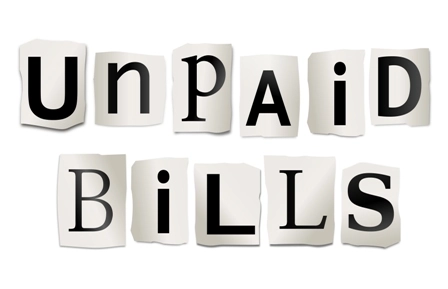EM Coding Alert
Incorrect Incident-to Billing Could Cut Into $$
Keep your bottom line strong with incident-to coding smarts.
Coders who don’t know the guidelines of incident-to billing could be inadvertently committing one of two sins:
1. Reporting incident-to services that don’t qualify for that designation, which would pay your practice additional, unearned money.
Neither mistake is advisable, for obvious reasons. Be sure your incident-to billing is spot-on so you can make the right decision every time.
Incident-to Allows NPP to Provide ‘Incidental’ Services
For a basic definition of incident-to, we checked in with Jean Acevedo, LHRM, CPC, CHC, CENTC, president and senior consultant with Acevedo Consulting Incorporated in Delray Beach, Fla.
“Incident-to billing is a Medicare benefit that allows a physician practice to bill for services personally provided by ancillary staff under the name and NPI [national provider identifier] of the supervising physician or nonphysician practitioner [NPP],” she explains.
When you use incident-to correctly, “it can add 15 percent to a practice’s bottom line when a nurse practitioner, physician assistant, or clinical nurse specialist — an NPP— performs a service,” Acevedo says.
Explanation: If the visit meets incident-to parameters, the NPP can bill under the supervising physician’s NPI, which will net the practice 100 percent of the fee. If the same visit is billed with the NPP’s NPI, you’ll only receive 85 percent reimbursement for the same service.
NPPs are also known as mid-level providers (MLPs) or advanced practice providers (APPs). They are usually physician assistants (PAs), nurse practitioners (NPs) or certified nursing specialists (CNSs), although the CMS definition of NPP also includes social workers, therapists, etc.
For a complete list of providers that could be considered NPPs, check out: https://www.cms.gov/Regulations-and-Guidance/Guidance/Transmittals/downloads/r1764b3.pdf.
Remember, Some Payers Won’t Allow Incident-to
Coders cannot assume that all payers will accept incident-to claims. Incident-to billing is a feature of Medicare, and payers that follow Medicare payment guidelines.
“Some payers may require that NPP’s services always be reported under the NPP’s name and NPI,” warns Marvel Hammer, RN, CPC, CCS-P, ACS-PM, CPCO, owner of MJH Consulting in Denver, Co. It’s always important to regularly check with your top payers to understand how they would like you to code these types of services.
Also, there are some pretty stringent rules you must follow to take advantage of the incident-to rule. Check out this expert advice before filing another incident-to claim.
Plan of Care a Must for Incident-to
Perhaps the most important point to remember regarding incident-to is this: An NPP can only bill incident-to a physician if she is following an established plan of care of an established problem known to the practice.
“New patient visits, as well as services for new problems do not meet Medicare’s incident-to criteria,” Hammer says. “A physician must personally perform an initial service and establish a plan of care for the particular condition. The physician must also remain actively involved in the patient’s course of treatment,” she says.
Think about it: “The term incident-to means that the services of the NPP are incidental to the physician’s services and plan of treatment,” explains Acevedo. So if your NPP is performing a medication check for a patient with an established plan of care for diabetes, the service is incidental to the physician’s treatment.
If the NPP sees a new patient with a new complaint of severe fatigue and nausea, however, it would not be incidental to any plan of care because the physician hasn’t seen the patient. You would code for these services directly under the NPPs NPI.
No Direct Supervision = No Incident-to
Medicare stipulates that an NPP must be working under “direct supervision” of a physician to bill incident-to. If you cannot meet these supervision rules, don’t pursue incident-to billing for the claim.
The supervision question can cause some hesitation when making the incident-to decision, because coders can get flummoxed by the exact definition of “direct supervision.”
And sometimes, state laws make supervision guidelines clear as mud.
In short: Medicare’s federal incident-to rules supersede any state’s rules — and the feds’ rules are often more restrictive, Hammer says.
Some state boards only require general supervision, or that the physician be available by phone, in order to consider an NPP “directly” supervised.
In order to meet Medicare’s direct supervision guidelines, the supervising physician must be physically present in the office suite and available to provide assistance and direction to the NPP. If there is no physician physically present in the office suite during the time of the NPP service, the service must be billed to Medicare under the NPP’s name and NPI.
During the incident-to service, the supervising physician does not need to be physically present in the treatment room or actually see the patient. However, “the supervising physician cannot be across the street, three blocks away, or available via cell phone but not in person,” says Acevedo.
It’s recommended that the NPP indicate this supervision within the text of the documentation for the visit. The NPP can add that the supervising physician was in the suite at the time of the service. This will allow for a clear illustration that the supervision requirement has been met.
These supervision rules are in place to protect patient safety, Acevedo explains.
For example, if the patient has an adverse reaction to an injection, or passes out during a routine venipuncture, the physician must be immediately available to provide care to the patient.
Any Physician Can Provide Incident-to Supervision
Medicare allows practices to bill incident-to the physician as long as the NPP has direct supervision during the service of one of the physicians within the practice. The physician who established the plan of care doesn’t necessarily have to be the one supervising, however.
Example: An NPP is treating a patient and Dr. X is the supervising physician. However, the NPP is following Dr. Y’s treatment plan, and Dr. Y is not present during the treatment.
“Chapter 26 of the CMS Claims Processing Manual addresses which physician to bill under when the patient’s treating physician is not in the office but another physician with the group is there to provide direct supervision,” says Acevedo.
In this example, you would report the service under Dr. X’s NPI “as she was the one that was physically present in the office suite during the NPP service,” Hammer says.
Report Dr. X’s NPI in item 24J of the 1500 claim form (or its electronic equivalent) as well as her name in item 31.
Then, you list the physician who formed the plan of care (Dr. Y) in item 17 of the 1500 claim form (or its electronic equivalent).
2. Not reporting incident-to services that qualify as incident-to, which would deprive your practice of entitled money.
Related Articles
EM Coding Alert
- CCI 22.1:
CCI Bundles Up INR, Anticoagulation With Hospital Codes
Expert: Stop reporting 99363, 99364, G0250 with these inpatient E/Ms. The latest Correct Coding Initiative [...] - Medicare:
Incorrect Incident-to Billing Could Cut Into $$
Keep your bottom line strong with incident-to coding smarts. Coders who don’t know the guidelines [...] - Modifiers:
Follow 32's Rules When Coding Mandated Services
Expert: Second opinion requests often lead to modifier 32 situations. When a provider performs an [...] - Reader Question:
Coding O2 Therapy, E/M Together Will Deflate Claim
Question: During an E/M service, our provider ordered oxygen therapy for a 65-yeear-old patient with a [...] - Reader Question:
Learn Split/Shared Visit Rules to Avoid Pay Cuts
Question: I’ve heard nurse practitioners (NPs) and other providers talk about “splitting” a service with a [...] - Reader Question:
Don't Get Paranoid Over a Paronychia Procedure with an E/M Code
Question: I have a question regarding whether to apply both the E/M code and the procedure [...] - You Be the Coder:
Nosebleeds, E/Ms and Potential Procedure Codes
Question: I have a rather involved claim that I need help with. A 22 year-old established [...]




